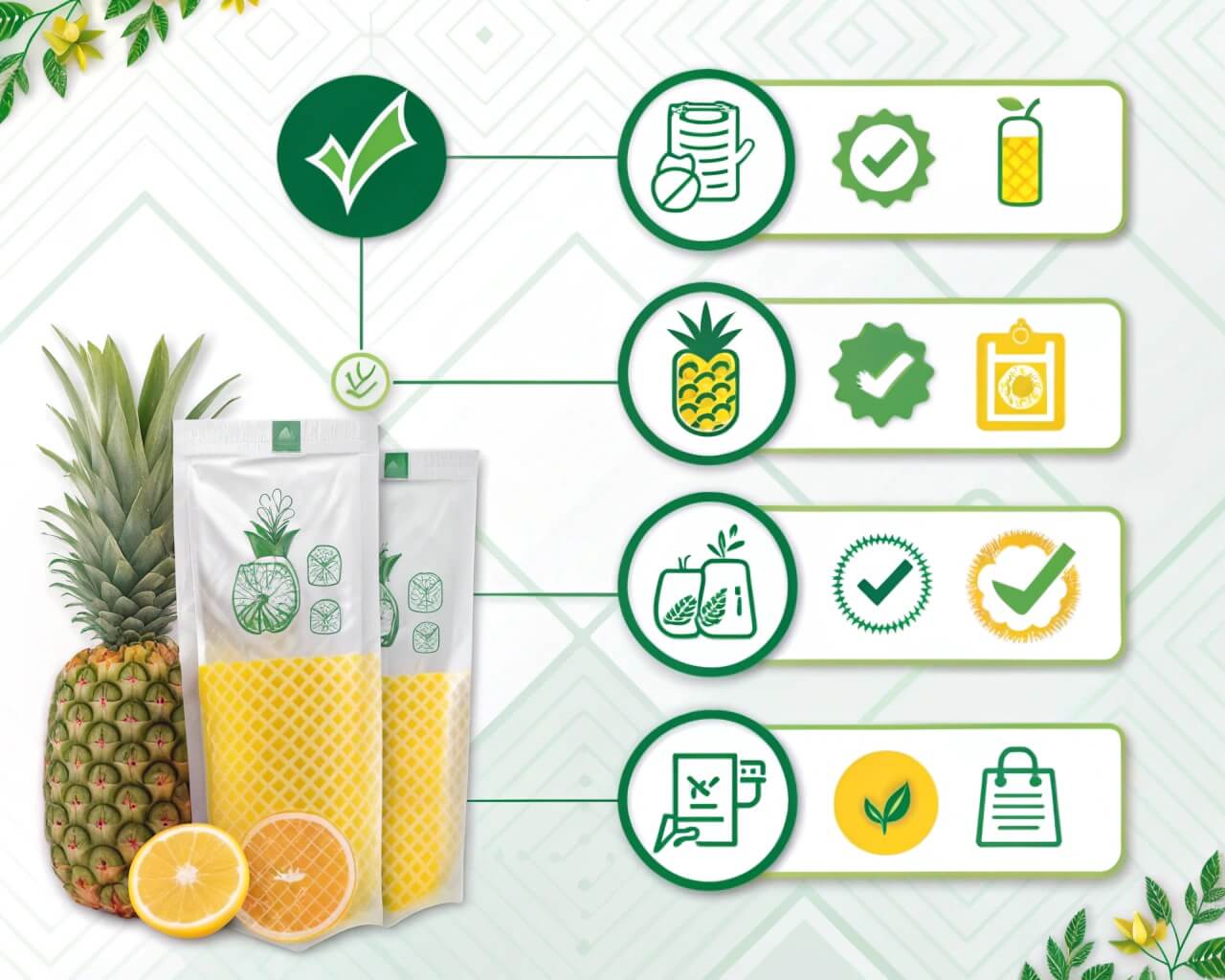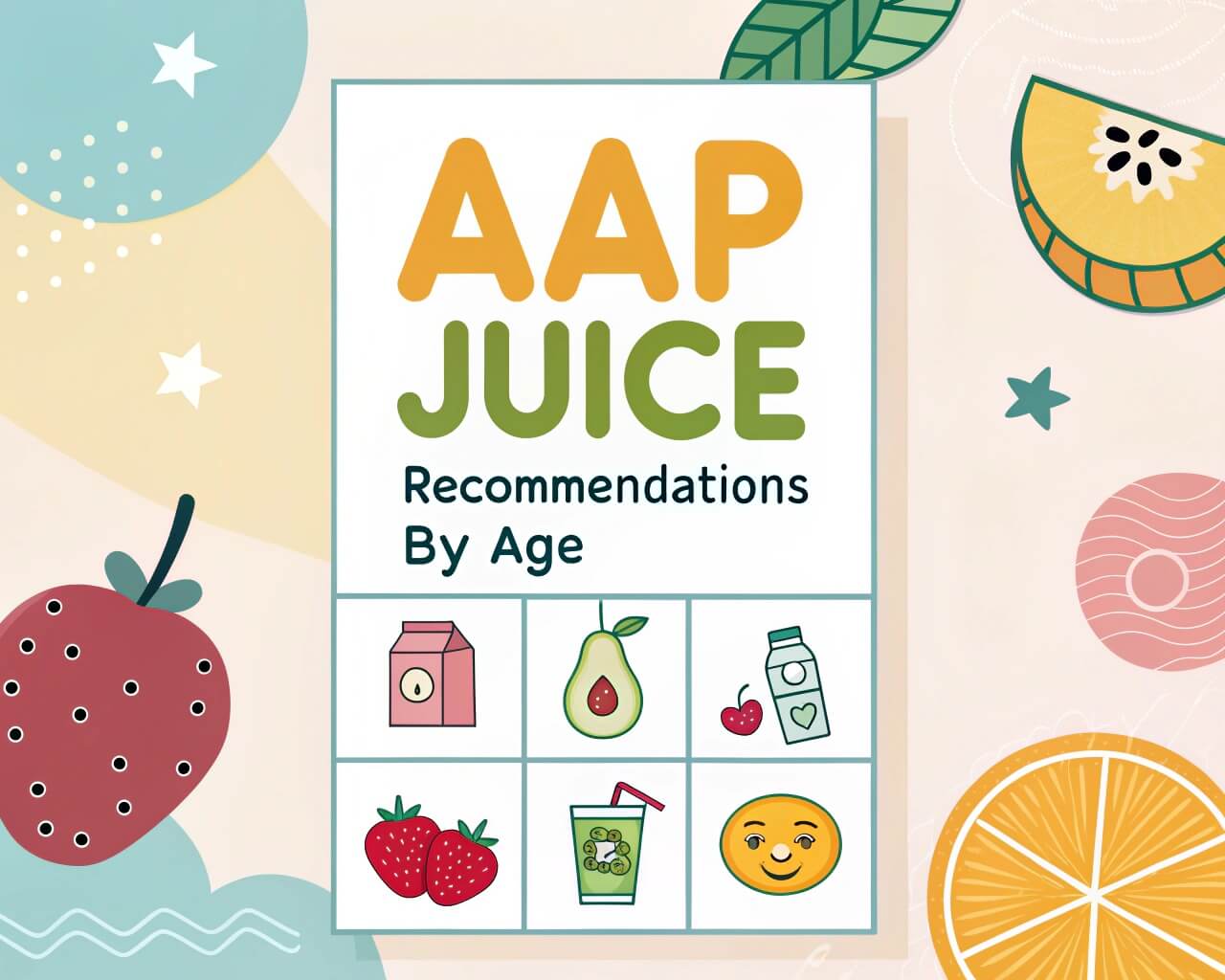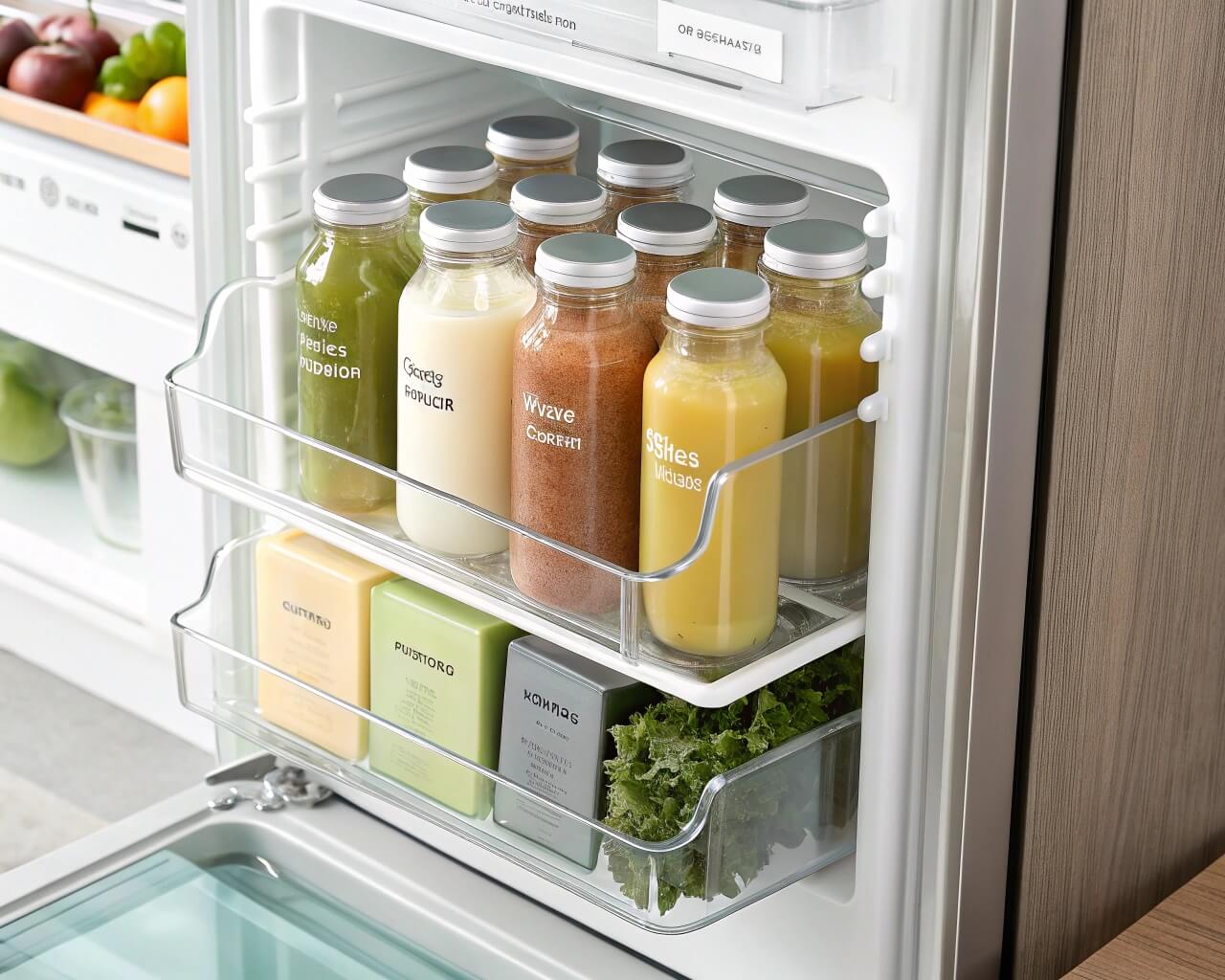Are you worried about the safety of the juice your family drinks or your brand sells? Harmful chemicals can leach from low-quality packaging, posing health risks. We believe choosing the right packaging is crucial for safety.
Choosing safe juice bags means checking five key things: 1. Food-grade, non-toxic materials. 2. Relevant safety certifications. 3. Reliable, experienced suppliers like us at XINYUAN. 4. Good barrier properties against oxygen and light. 5. Strong, reliable seals to prevent leaks and contamination.

Ensuring the juice inside the bag is safe is just as important as the bag itself. This involves understanding health recommendations, proper handling, and how juice fits into a diet. Let’s explore these related topics to give you a complete picture of juice safety. As manufacturers, we see how packaging choices impact these areas.
What are the AAP guidelines for juice?
Are you unsure how much juice is healthy for children? Giving too much juice can lead to cavities, poor nutrition, and weight gain. Knowing the official guidelines helps protect kids’ health.
The American Academy of Pediatrics (AAP) advises limiting juice. For children under 1, avoid juice completely. Toddlers (1-3 years) should have no more than 4 ounces daily. Children 4-6 years old can have 4-6 ounces daily. Older children (7-18) should limit intake to 8 ounces daily. Always choose 100% fruit juice.

Why Limit Juice Intake?
Juice seems healthy, but the AAP has good reasons for its recommendations. Whole fruits offer fiber, which aids digestion and helps control blood sugar. Juice lacks this fiber. The natural sugars in fruit become very concentrated in juice. Drinking a lot of juice can contribute too much sugar to a child’s diet quickly. This can lead to dental cavities and may contribute to unhealthy weight gain over time. Relying on juice can also displace more nutritious foods and drinks, like milk and water.
Key Age Recommendations Summarized
Understanding the specific limits is important for parents and caregivers.
| Age Group | Daily Juice Limit (100% Juice) | Key Considerations |
|---|---|---|
| Infants (<1 yr) | 0 ounces | Breast milk or formula provides necessary fluids. |
| Toddlers (1-3 yr) | Up to 4 ounces (1/2 cup) | Offer in a cup, not a bottle or sippy cup. |
| Children (4-6 yr) | 4 to 6 ounces (1/2 – 3/4 cup) | Part of a balanced diet, not the main fluid. |
| Children (7-18 yr) | Up to 8 ounces (1 cup) | Whole fruit is always a better choice. |
At XINYUAN, we manufacture pouches in various sizes, including smaller 4-ounce and 6-ounce options perfect for single servings that align with these health guidelines.
What is the safe handling and storage of juice?
Have you ever found spoiled juice in the fridge? Improper handling lets bacteria grow, making juice unsafe to drink. Knowing the correct steps prevents spoilage and potential illness.
Safe handling involves refrigeration after opening, checking expiration dates, and using clean containers. Store unopened shelf-stable juice in a cool, dark place. Once opened, keep juice refrigerated (below 40°F or 4°C) and consume it within the recommended time, usually 7-10 days.

Handling Juice Safely: Step-by-Step
Proper handling starts before you even open the package and continues until the juice is consumed.
Before Opening
Always check the packaging integrity. Look for leaks, damage, or bulging, which could indicate spoilage. At XINYUAN, we ensure our bags have strong seals. Check the "best by" or expiration date. Store shelf-stable juices (like those in aseptic bags) in a cool, dry, dark pantry. Refrigerated juices must be kept cold from the store to your home fridge.
After Opening
Refrigerate juice immediately after opening, even shelf-stable types. Keep the temperature below 40°F (4°C). Use the juice within the timeframe suggested on the label, typically 7 to 10 days. Always pour juice into a clean glass; do not drink directly from the container, as this introduces bacteria. Close the container tightly after each use.
The Role of Packaging
Good packaging is your first line of defense. Multi-layer pouches, like those we produce at XINYUAN, offer excellent barrier properties against oxygen and light, which degrade juice quality and safety. Aseptic packaging allows juice to be shelf-stable without refrigeration before opening because it’s sterilized during packaging.
| Do | Don’t |
|---|---|
| Check expiration dates before buying. | Buy packages that are damaged or leaking. |
| Refrigerate immediately after opening. | Leave opened juice at room temperature for >2hrs. |
| Store unopened juice properly. | Drink directly from the container. |
| Use juice within 7-10 days of opening. | Use juice that smells or looks "off". |
| Keep refrigerator below 40°F (4°C). | Store juice in the refrigerator door (temp fluctuates). |
What food category is juice?
Are you confused about whether juice counts as a fruit serving or just a sugary drink? Misunderstanding its category can impact dietary choices. Knowing where juice fits helps build a balanced diet.
Juice, specifically 100% fruit juice, is often grouped with the fruit category in dietary guidelines like USDA’s MyPlate. However, it lacks the beneficial fiber found in whole fruits. Because of its concentrated sugar content, excessive intake makes it behave more like a sugar-sweetened beverage.

Juice vs. Whole Fruit
While derived from fruit, 100% juice is nutritionally different. The primary difference is fiber. Whole fruits contain dietary fiber, which slows sugar absorption, aids digestion, and promotes feelings of fullness. The juicing process removes most of this fiber. Juice provides vitamins and minerals found in fruit, like Vitamin C, but it’s a much more concentrated source of natural sugars and calories. This makes it easier to consume excess sugar and calories quickly compared to eating whole fruit. For this reason, dietary guidelines often recommend limiting juice intake and prioritizing whole fruits.
Regulatory Classification and Labeling
Food regulations often distinguish between "100% juice" and "juice drinks" or "nectars." Products labeled "100% juice" must be entirely fruit juice. Juice drinks contain less juice and often have added sugars, water, and flavorings. Labels must clearly state the percentage of juice content. This helps consumers understand what they are buying. As packaging manufacturers, we at XINYUAN know the importance of designing bags that allow brands to display this nutritional information clearly and comply with labeling regulations.
| Feature | 100% Fruit Juice | Juice Drink/Cocktail | Whole Fruit |
|---|---|---|---|
| Juice % | 100% | Varies (<100%) | N/A |
| Fiber | Little to none | Little to none | High |
| Sugars | Natural fruit sugars | Natural + Added sugars | Natural fruit sugars |
| Vitamins | Yes | Sometimes fortified | Yes |
| Category | Fruit (limited serving) | Sugar-Sweetened Beverage | Fruit |
Conclusion
Choosing safe juice bags and understanding juice guidelines are vital for health. Focus on material safety, supplier trust, proper handling, and moderate consumption for the best experience.

